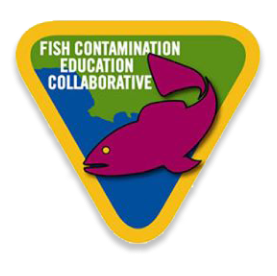Sediment 101: Top 5 Things You Need to Know About the Palos Verdes Shelf Superfund Site
 Lately, we’ve been talking a lot about fish contamination in Southern California, but we realize we haven’t said much about the source of contamination: the Palos Verdes Shelf Superfund site. The Palos Verdes Shelf Superfund site is an area of the Pacific continental shelf off the Palos Verdes peninsula contaminated with the pesticide DDT (dichloro-diphenyl-trichloroethane) and waste from industrial lubricants called PCBs (polychlorinated biphenyls). Here are a few Q&As about the Superfund site and why it matters to you.
Lately, we’ve been talking a lot about fish contamination in Southern California, but we realize we haven’t said much about the source of contamination: the Palos Verdes Shelf Superfund site. The Palos Verdes Shelf Superfund site is an area of the Pacific continental shelf off the Palos Verdes peninsula contaminated with the pesticide DDT (dichloro-diphenyl-trichloroethane) and waste from industrial lubricants called PCBs (polychlorinated biphenyls). Here are a few Q&As about the Superfund site and why it matters to you.
1. What is a Superfund site?
“Superfund” refers to a program run by the U.S. Environmental Protection Agency that cleans up hazardous waste sites. The program included a fund to pay for the cleanups, and that’s the source of the name “Superfund.” There are over 1,200 Superfund sites nationwide and over 100 in California.
2. How was the Palos Verdes Shelf contaminated?
After World War II, as the Los Angeles population and businesses grew, the world’s largest manufacturer of DDT, the Montrose Chemical Corporation of California, opened in Torrance, California. During its 35 years of operation, Montrose produced 800,000 tons of DDT. A lot of DDT waste entered the county sewer system. An estimated 1,000 tons of DDT ended up being discharged with treated waste water into the ocean; a fraction of this, 50-100 tons, settled onto the Palos Verdes Shelf. A much smaller amount of PCBs also settled on the shelf.
Today, the Palos Verdes Shelf is the largest known DDT contamination site in the world.
3. Why should sediment contamination matter to me?
Although the contaminated sediment is too deep for human contact, chemicals such as DDT and PCBs can enter the food chain through marine animals that feed near the ocean floor. The contamination travels up the food chain as these animals are eaten by other marine life. People who catch and regularly consume contaminated seafood risk developing health problems, including cancer, liver disease and effects to the nervous system.
4. What is being done to remedy this problem?
The EPA has designed a three-pronged approach to address the contamination: capping the most contaminated sediment; monitoring recovery in sediment and fish; and market regulation, public education and outreach.
The EPA is working with the following agencies to conduct regular inspections of markets to ensure that contaminated fish caught in the area are not sold to consumers: California Department of Fish and Game, LA County Department of Public Health, Orange County Health Care Agency, and Long Beach Department of Health and Human Services.
As for public education and outreach, the EPA is overseeing the efforts of our program—the Fish Contamination Education Collaborative—to reduce the consumption of local contaminated fish. FCEC reaches out to fishermen and other residents of the community through events, presentations, online communication and the distribution of educational materials.
 5. How can I protect my health against fish contamination?
5. How can I protect my health against fish contamination?
Our Southern California Fish Consumption Advisory page has guidelines for fish caught from Ventura Harbor to San Mateo Point. The area is divided into two types of zones: red and yellow. The Palos Verdes Shelf is a red zone while the zones between Ventura Harbor and Santa Monica Pier, and Seal Beach Pier and San Mateo point are yellow.
There are different consumption guidelines between red and yellow zones. Make sure to follow the guidelines for your sex and age as well.
You can also watch videos with tips on identifying contaminated fish on our YouTube channel.
More Information
For more information about the Palos Verdes Shelf contamination site, visit FCEC’s Project History page and the EPA’s Palos Verdes Shelf Superfund page.

